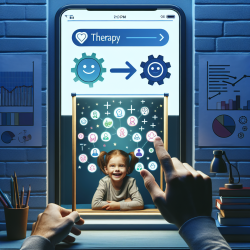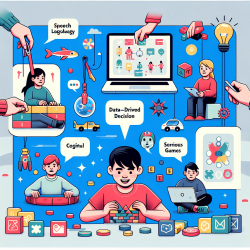Unlocking the Emotional World of Visual Media: How Practitioners Can Transform Children's Therapy Outcomes

The recent research article "Unlocking the Emotional World of Visual Media: An Overview of the Science, Research, and Impact of Understanding Emotion" provides a comprehensive examination of how visual media influences human emotions. As a practitioner in speech-language pathology, leveraging these insights can significantly enhance therapy outcomes for children.
Key Insights from the Research
The study delves into the psychological foundations of emotion and how they can be computationally analyzed from visual media. Here are some pivotal takeaways:
- Emotion Theories: Understanding the different models of emotion, from Darwin's basic emotions to modern dimensional approaches, can help practitioners tailor interventions that resonate more deeply with children.
- Behavioral Intentions: Emotions are closely linked to behavior. Recognizing how specific emotions influence actions can help in designing more effective therapy sessions.
- Data Collection: High-quality, ecologically valid datasets are essential for training AI systems that can assist in therapy. The research emphasizes the importance of immediate response and test-retest reliability in data collection.
- Body Language: The study highlights the importance of body language in understanding emotions, which is particularly relevant for children who may not always verbalize their feelings effectively.
Implementing Research Outcomes in Therapy
To enhance therapy outcomes, practitioners can integrate these research findings into their practice:
- Use Multimodal Data: Incorporate visual media that evoke specific emotions to help children recognize and articulate their feelings. This can include videos, images, and interactive media.
- Leverage AI Tools: Utilize AI-driven tools that analyze facial expressions and body language to gain insights into a child's emotional state. This can help in real-time adjustments during therapy sessions.
- Focus on Behavioral Interventions: Design activities that link emotions to specific behaviors. For example, using role-play to help children understand how different emotions can influence their actions and reactions.
- Data-Driven Decision Making: Collect and analyze data on therapy sessions to identify patterns and adjust strategies accordingly. This ensures that interventions are tailored to each child's unique needs.
Encouraging Further Research
While the current research provides a robust foundation, there is always room for further exploration:
- Explore Cultural Variations: Investigate how cultural differences influence emotional expression and perception in children.
- Longitudinal Studies: Conduct long-term studies to understand how early interventions in emotional understanding impact children's development over time.
- Technology Integration: Continue to explore how emerging technologies, such as virtual reality and augmented reality, can be integrated into therapy to create immersive emotional learning experiences.
To read the original research paper, please follow this link:
Unlocking the Emotional World of Visual Media: An Overview of the Science, Research, and Impact of Understanding Emotion
Citation: Wang, J. Z., Zhao, S., Wu, C., Adams, R. B., Jr., Newman, M. G., Shafir, T., & Tsachor, R. (2023). Unlocking the Emotional World of Visual Media: An Overview of the Science, Research, and Impact of Understanding Emotion. Proceedings of the IEEE. Institute of Electrical and Electronics Engineers. https://doi.org/10.1109/JPROC.2023.3273517










